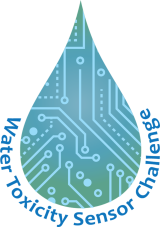Water Sensors Toolbox
- Uses and Applications
- Water Sensor Development and Evaluation
- EPA Water Sensor Research
- Additional Resources
- Frequently Asked Questions
Read More: Explore Water Sensors Publications and Presentations
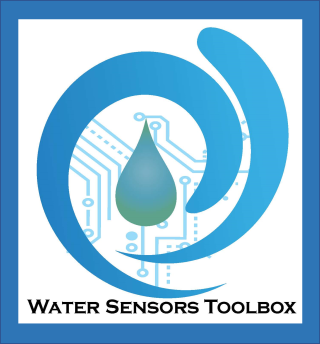
The Water Sensors Toolbox provides a collection of resources and information related to EPA research that uses, evaluates, and/or develops water sensors―including remote sensors and related data management technology. Water sensors are devices that can be used to collect information from a targeted body of water. At EPA, researchers are particularly interested in water sensors that collect information about pollutants and other factors that impact water quality.
These resources may be useful to:
- students,
- researchers,
- citizen scientists,
- water quality decision makers, or
- others interested in collecting data on water quality with the use of water sensors.
Water sensors can be used both for drinking water and environmental applications. Because those applications often overlap, they are presented together in this toolbox. Where the distinction is important, it has been noted.
Uses and Applications
Uses for Water Sensors
-
Monitoring water quality
-
Detecting contaminants
-
Monitoring septic systems for discharges
-
Measuring levels of nutrients in surface waters
-
Detecting chlorophyll a, which can in turn be used for predictions (e.g., harmful algal blooms and/or cyanotoxins in watersheds)
-
Measuring the use and effectiveness of wastewater and drinking water treatment
-
Monitoring distribution systems
Applications of Water Sensors
- Measuring water quality parameters, such as pH, water temperature, conductivity, dissolved oxygen, and turbidity.
- Monitoring for contaminants, such as cyanobacteria and cyanotoxins, chlorophyll and algae, nutrients (i.e., nitrogen and phosphorus) and nutrient species (e.g., ammonia, nitrite, nitrate, orthophosphate, total nitrogen, total phosphorous), arsenic, bromine, calcium, magnesium, and chloride.
- Describing physical characteristics of water, such as water presence/absence, water level, and discharge.
Water Sensor Development and Evaluation
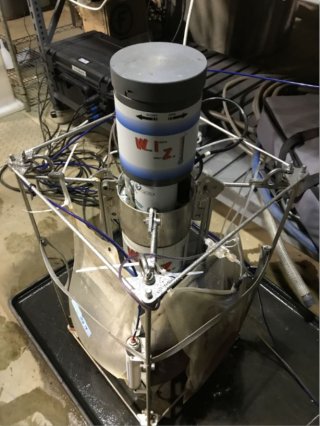
Water Sensor Development
- While EPA's focus is on using available sensors, there is some work aimed at developing sensors for specific contaminants, such as for arsenic detection.
- EPA encourages inventors and entrepreneurs to develop needed sensors through Challenges. A recent example includes the development of water toxicity sensors. View a complete list of EPA Challenges.
- EPA also encourages sensor development through the Small Business Innovation Research (SBIR) Program. Please visit the SBIR Funding Opportunities webpage for more information about specific opportunities.
Interpreting and Evaluating Water Sensor Data
As the number of water sensors increase, EPA is working to better understand the capabilities and limitations of water sensors. Below are documents and information on water sensors and their use:
- Online Water Quality Monitoring Resources: Online instruments for real-time water quality measurement in source waters and/or distribution systems. These resources can help utilities optimize treatment processes, improve distribution system operations, and detect contamination incidents.
- Wet weather, such as rain and snowmelt, can significantly increase flows at wastewater treatment facilities, creating challenges to treatment efficiency, reliability, and control of treatment units. The Smart Data Infrastructure for Wet Weather Control and Decision Support document is a guide on how local governments and treatment facilities can use advanced monitoring data to support wet weather control and decision making in real time or near real time. Smart Data Infrastructure for Wet Weather Control and Decision Support (March 2021) (pdf)
Supporting Technology and Data Management of Water Sensors
The supporting technologies needed for water sensors are similar to those used for air sensors since the underlying technology, after the initial detector, is basically the same. There are a small number of projects on these technologies, such as those aim to improve managing the data produced by sensors. For example, EPA's CANARY system gathers sensor data from distribution systems to develop algorithms that indicate when a system may be out of balance. Given the large amount of data anticipated as sensor use becomes more common, this area of research will become more important over time.
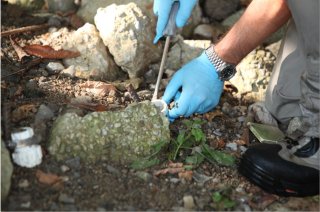
Water Sensors Performance Evaluations
The evaluation of the sensitivity, precision, and reliability is a critical need for sensors. Below are some highlighted efforts for evaluating sensors:
- EPA's Homeland Security Research Program developed a suite of models, tools and applications for securing and sustaining water systems. Among these tools is CANARY, a software-based contamination warning system that uses statistical and mathematical algorithms on standard water quality data to identify the onset of periods of anomalous water quality.
- Alliance for Coastal Technologies conducts sensor evaluations and EPA scientists are involved in the effort.
- Distribution System Water Quality Monitoring: Sensor Technology Evaluation Methodology and Results is a 2009 EPA report that gives EPA’s results from investigating water quality monitoring sensor technologies that could have been part of a real-time contamination warning system (CWS).
- Distribution System Water Quality Monitoring: Sensor Technology Evaluation Methodology and Results - An Updated Guide for Sensor for Manufacturers and Water Utilities is an update that provides the results from 10 additional sensors tested at EPA Test and Evaluation facility. EPA's testing of water quality sensors provides information to sensor manufacturers and utilities. New sensors have come on the market since this handbook was originally published in 2009.
EPA Water Sensor Research
Water sensors are used to provide data for several EPA-supported efforts, such as those listed below. For many of these efforts, EPA scientists are working in collaboration with other federal agencies, including the National Oceanic and Atmospheric Administration (NOAA), the National Aeronautics and Space Administration (NASA), the U.S. Geological Survey (USGS), and the U.S. Army Medical Research Institute of Infectious Diseases (USAMRIID). In addition, EPA often works with states, Tribes, and local governments on these efforts.
- National Aquatic Resource Surveys (NARS) are collaborative programs between EPA, states, and Tribes designed to assess the quality of the nation's coastal waters, lakes and reservoirs, rivers and streams, and wetlands using a statistical survey design.
- EPA's Harmful Algal Blooms (HABs) monitoring research uses data sources from fundamental research, high-frequency modern sensors, local sampling, satellite imagery, and others to characterize the development, intensity, and spatial extent of HABs in rivers, streams, lakes, and reservoirs, including recreational and source water.
-
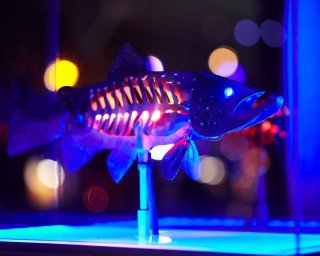
Gil The Fish is an interactive sculpture used as part of the Village Blue Lake Pontchartrain Project to help visualize water quality. - The CyAN app is a mobile and web browser-based application that provides access to algal bloom satellite data for over 2,000 of the largest U.S. lakes and reservoirs. EPA scientists developed the app to help local and state water quality managers make faster and better-informed management decisions related to cyanobacterial blooms.
- CyAN Presentation Summary
- Water Quality Monitoring Resources for the Merrimack River provides data and monitoring resources in the Merrimack River.
- EPA and USGS initiated the Village Blue project to demonstrate the use of water quality sensors to increase community awareness about local water quality.
Village Blue Lake Pontchartrain Fact Sheet (pdf)
- Read the Science Matters Story: Village Blue Village Blue Lake Pontchartrain Offers New Orleanians Insights into Local Water Quality
- Water Quality Data from Mystic River Watershed includes background information on the watershed, live water quality data, how EPA collects water quality data, contacts, updates of events and activities, and an invitation to become part of the solution.
- Freshwater Explorer is an interactive web-based mapping tool that provides information about background and observed salt and mineral content for freshwater streams, lakes, and wells in all 50 U.S. states, Puerto Rico, and the U.S. Virgin Islands.
- The Water Quality Portal is a cooperative service sponsored by USGS, EPA, and the National Water Quality Monitoring Council. It serves data collected by over 400 state, federal, tribal, and local agencies.
Frequently Asked Questions About Water Sensors
Answers to commonly asked questions about water sensors are provided to inform those interested in using the technology.
What can be measured with water sensors?
Water sensors currently on the market measure a wide variety of pollutants and other water quality parameters. Examples include the following:
- Blue-Green Algae (phycocyanin, or phycoerythrin pigments)
- Chemical Oxygen Demand
- Chlorophyll
- Color
- Conductivity
- Chlorine
- Depth
- Dissolved Oxygen
- Flow Rate
- Nitrogen (either as ammonia, nitrate, and/or nitrite, or without distinguishing
- Oxygen Reduction Potential
- pH
- Presence or Absence of Water
- Pressure
- Salinity
- Surface sheen
- Temperature
- Turbidity
- Other parameters may be available
How is water sensor technology being used?
Potential uses for water sensor technologies include the following:
- Science education
- Supplementing regulatory water quality measurements
- Conducting research
- Measuring local water quality to better understand sources of pollution
- Locating leaks at industrial facilities
- Emergency response
Can water sensor data be used to help identify water quality problems?
Yes. Several of the water sensor activities included in the toolbox are designed to identify water quality problems. A few EPA examples are listed below:
What are the common challenges experienced by users of water sensors?
- Business case – Some sensors work very well but are difficult to integrate into a research or operational plan. There should be a clear path to using the data that is being generated by any sensor prior to procurement and installation.
- Biofouling of sensors – This is a problem for multiple sensors. Users need to know how often to clean sensors. Copper coated sensors tend to reduce fouling but, in some cases, leaching of copper ions may affect other detection analyses.
- Sensor placement – Placing a water sensor at the right location is key to accurate sensor readings. For example, flooding in a stream or any kind of water fluctuation can affect placement of sensor and thus can affect readings. Birds and other animal interferences have been notorious for affecting sensor readings!
- Data logging, transfer, and warehousing – There can be different challenges depending on the type of data. Things to consider are firewalls, data ownership, and mechanisms for transferring data. The more remote you are the more difficult it is to transfer data. Cost of data storage and transfer should be considered. Some software for transmitting data behind firewalls can be expensive.
- Data compatibility – Sensors from multiple vendors can have varying data on the same parameters. For example, there is a lot of variability with different sensors in detecting pH.
- Data analysis – Data processing for large volumes of data are difficult without data scientists to analyze data. There should be conversations on how to standardize data analysis across multiple projects.
- Maintenance cost – Routine maintenance of a sensor should be considered. For example, Ion Selective Electrodes have membranes that need to be replaced frequently
- Standardization of data based on calibrations – There are no standards on pre-data and post-data calibration of instruments. For example, calibrations can vary depending on the type of media for calibration (e.g., distilled water or buffered water).
- Life cycle cost – Depending on type of sensor, the expense of a sensor can vary significantly. Therefore, knowing the life span of a sensor and cost analysis of maintenance of sensor should be considered.
- Site specific concerns – power, availability of light for photovoltaic cells, cellular connectivity, human activity, animal activity, weather, extreme high or low water conditions, sedimentation, highly corrosive waters, and earth movements, among others.
- Clocks on sensors – Variation can exist between sensor on time logging. This should be considered when linking time with sampling analyses.
Learn more about the science: Sensors for Emerging Water Contaminants: Overcoming Roadblocks to Innovation
Why is EPA involved in the advancement of water sensors?
The demand for more frequent, lower cost monitoring approaches for water is increasing and will be important as the EPA works to respond to existing and new challenges in managing water quality. As such, sensors are playing an increasing important role in the monitoring of water quality. There are several efforts at EPA aimed at the development and use of sensors to provide data and tools to support utilities and water quality managers.
Can EPA make recommendations on water sensors to help guide me in my selection?
As a federal agency, EPA cannot make recommendations to the public on the use of particular commercial water sensors for their projects, nor can EPA endorse commercial products.

